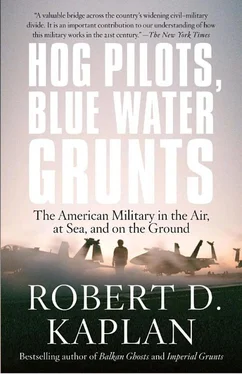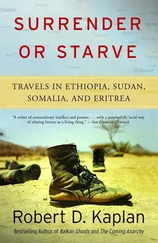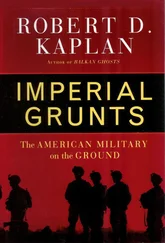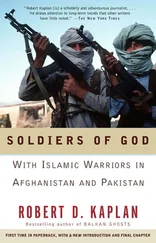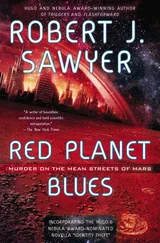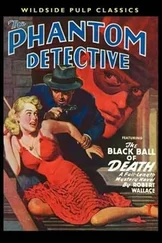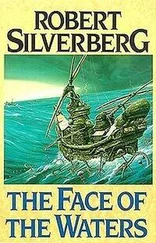The Stryker was an eight-wheeled light-armored vehicle with an MK-19 grenade launcher and a .50-caliber machine gun that could transport eleven soldiers—a two-man crew and nine-man assault squad—at 60 miles per hour for 330 miles without refueling. Thus, the vehicle represented a lighter and more lethal regular Army suited for an unconventional battlefield, able to send small units great distances over rough terrain in relative comfort. The Stryker was named for Stuart Stryker and Robert Stryker, two unrelated Army noncommissioned officers killed under heroic circumstances: the former in Germany in 1945, the latter in Vietnam in 1967. [8] The Army had two other Stryker brigades, both based out of Fort Lewis, Washington.
The Stryker’s real significance for Alaska was that, for the first time since the end of the Vietnam War, the 172nd—to be the bulk of USARAK—would be a deployable, war-fighting force in fact as well as theory, with rail, port, and pallet facilities soon to be constructed and upgraded, in order to ship men and equipment anywhere around the globe in days and hours instead of months.
The ability to deploy large numbers of troops around the world at a moment’s notice had been a Pentagon priority for years. Now that the Air Force was increasingly able to fly large numbers of soldiers over the North Pole, Iraq, Afghanistan, and Kosovo were only five thousand miles away from Alaska, not much farther than Korea and the Philippines. Alaskan military bases were closer to the Middle East than any bases in the lower forty-eight states. The 172nd would be headed to Iraq, where I would link up with it the following year.
“Between the end of the Vietnam War and 9/11 we were basically a hunting and fishing brigade in the far north, it was real demoralizing,” one soldier told me. “Post 9/11, the Air Force in Alaska has become a tip of the spear for GWOT [the Global War on Terrorism]. And with the Stryker, we’re becoming the spear itself.”
Dawn on November 2, 2004—Election Day—did not arrive in Alaska until 9:30 a.m. By four in the afternoon it would be getting dark. But winters this far north were not nearly as depressing as the facts suggested; because sunlight spilled over the pole, it created an ethereal twilight that arrived long before dawn and lingered long after dusk. After sunup I went to the Stryker factory to inspect the vehicle and drive it.
The Stryker looked not much different than other infantry carrier vehicles, but it made a lot less noise, was constructed of metal composites that did not give off magnetic signals to lurking mines, and rode as though over a cushion of air. After being rattled around in the dusty interior of a Humvee and in the back of a seven-ton truck in Iraq and Afghanistan, I found the Stryker a pleasure to ride in. The interior, filled with computer screens for remote control of the guns, was like a roomy airplane with its own heating and cooling system. There was an infrared sight for locating enemy troops as far as twenty miles away, and even a microwave for heating MREs. The bottom line: the Stryker could deliver nine well-rested and decently fed grunts a great distance, ready to fight.
To observe the training of Stryker and other units I had to travel farther north. Thus, I went to nearby Elmendorf air base, where an Air National Guard crew flew Maj. Gohlke and me in a small plane to the army post of Fort Wainwright, outside Fairbanks. The flight from southern to central Alaska lasted forty-five minutes. Mount McKinley, the highest peak in North America, lay partially hidden in gunmetal fog, even as a lid of clouds was cracking open to reveal a lava red band on the western horizon. As the sun set in the late afternoon, the moon was already high in the sky.
Directly below, between masses of black spruce, the snow already had a faded February look. The Arctic tundra was a ragged death shroud of vegetation embedded in ice. It was a landscape of abstract brutality. Finally, Fairbanks and nearby Fort Wainwright appeared, meager grid-works in the snowy twilight. Fort Wainwright, where most of the 172nd Stryker Brigade was based, was named for Army Gen. Jonathan Wainwright, a defender of Bataan and Corregidor in the early days of World War II in the Philippines. In an example of the unlimited amount of space available to the U.S. military in Alaska, Fort Wainwright boasted access to no less than 10 percent of all the land controlled by the Army throughout the entire United States.
Maj. Gohlke, who had lived in Fairbanks, adored the area. Normally a quiet, taciturn guy, he lit up while talking about the summer solstice, when the first minor league pitch was thrown at midnight without the need for artificial lighting. “They’ll put on a local production of The Nut-cracker, and people with overalls who arrived in a flatbed truck will be sitting next to people in evening dress. In summer,” he continued, “you can practically walk across the rivers on the backs of beavers. The salmon run twelve hundred miles from the ocean to here. They haven’t eaten since leaving the salt water and are almost dead, yet they still put up a fight.”
Central Alaska near the Yukon River brought to mind, like no other place, the poetry of Robert W. Service and the prose of Jack London, two literary naturals and picaresque balladeers who had rollicking adventures to relate because their education had consisted not of the classroom, but of the school of hard knocks. London’s adventure stories, like Service’s Kiplingesque poetry, were inspired by the Alaskan gold rush: a last-ditch attempt to forge a new frontier in an increasingly crowded and recently industrialized America. 1London, an American, and Service, a Canadian, had both come of age in the first years of the twentieth century; thus their writing is unaffected by the literary modernism that came in the wake of World War I. Both had been vagabonds in search of gold in the far north. London wrote a story and Service a poem each entitled “The Call of the Wild.” Both were attracted to the brutal mountainscapes and fifty-below, starlit, wolf-howling nights of what Service called the “Great Alone.” 2London was more explicit: “In the Klondike…I found myself. There nobody talks.” 3
Truly, Fairbanks was small, very quiet, and more rough-hewn than Anchorage, a Middle American counterpart to the latter’s Seattlesque cosmopolitanism. At a restaurant-bar in Fairbanks with a real Klondike feel frequented by locals and off-duty servicemen I learned the results of the 2004 elections between President George W. Bush and Democratic challenger Sen. John Kerry. I was in the midst of a discussion with a lieutenant colonel about the demons of Pentagon bureaucracy when the energy level at the nearby tables suddenly intensified. I looked up at two TV screens whose audio I could not make out, because of the noise around me. On one screen Fox News commentators William Kristol and Fred Barnes were bobbing up and down in their seats with jocular expressions; on the other CBS News anchorman Dan Rather had an ashen, funereal look. The body language alone indicated the result. By the time we left, Bush was one electoral vote short of reelection and smiles and cheers lit up the place. The next morning I was eating breakfast in a local hangout when two young, very hip-looking women started high-fiving each other and shouting, “Bush won, Bush won!” I was a long way from my home in Massachusetts.
Fort Wainwright, around which life in Fairbanks revolved, was an illustration of what Bush’s foreign policy meant for infantry line units. Spread out for miles in the surrounding tundra, where the trees only looked dead because of the permafrost, the 172nd Stryker Brigade had turned this part of Alaska into a make-believe Iraq. In a blizzard-strewn forest clearing, I found the 4th Battalion of the 11th Field Artillery of the 172nd bivouacked in heated tents and manning a TCP (traffic control point), set up like so many I had seen the previous spring in Iraq’s Sunni Triangle, with oil drums and concertina wire arranged in obstacle-course fashion. The commanding officer had had his men react to eighty-seven theoretical events over the past forty-eight hours—a pregnant woman demanding medical help, a kid hiding plastic explosives, a nervous local police chief ready to flip to the side of the insurgents, an IED (improvised explosive device) that had gone off, and so on.
Читать дальше
